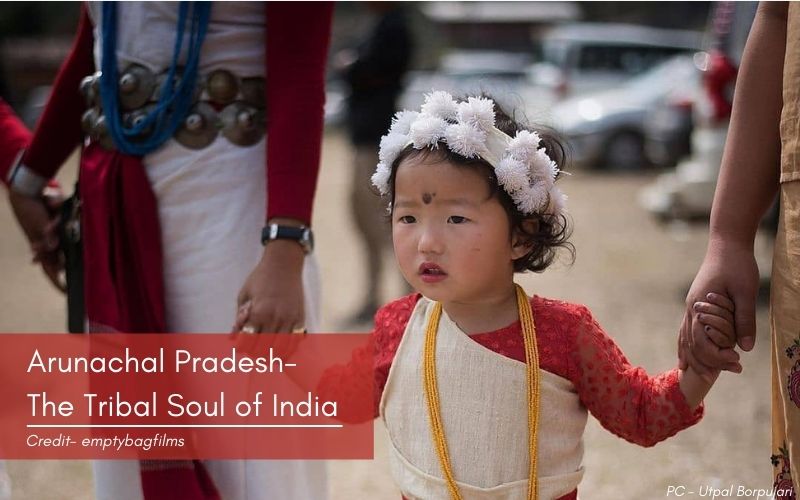
Arunachal Pradesh - The Tribal Soul of India
The gorgeous land of dawn lit mountains, situated in the Northeast India is one of the must-visit places, brimming with exotic landscapes, culture and people. Just like the other sisters of North East India, Arunachal Pradesh is inhibited by a various number of indigenous tribes. As of 2022, the state population is estimated to be around 1.61 Million. The population of Arunachal comprises of various tribes, with each tribe exhibiting their own distinct cultures and traditional practices. It won’t be wrong to say that the state represents a mini India - owing to its rice possession of tribal communities coming together to create a beautiful display of unity in diversity of cultures.
Tribes of Arunachal
Many major tribal communities along with sub-tribes co-exist harmoniously in the land of the rising sun. Despite the mesh of different cultures, the tribal communities inhibiting the land have learned to grow together and represent the state as one of the most diverse and peaceful states in India. Major tribes like Nyishi, Adi, Galo, Tagin, Monpa, Apatani etc. are situated in various districts of the state with their own distinct dialects and cultures, but there is something common in the rural life styles and the occupation of these people. The indigenous communities of Arunachal Pradesh mainly practice agriculture as their sole occupation; jhum cultivation to be precise. One can witness the villagers working in fields very early in the morning when half of the nation is asleep. Apart from agriculture, people of Arunachal Pradesh take a keen interest in hunting and fishing from time to time. The tribal communities here are very proficient in gathering forest produce too, which forms a significant part of their daily diet.
Beliefs and Customs
The people of Arunachal Pradesh follow their own social, cultural and religious customs and traditions, which are unique to their tribal heritage. Despite the differences in customs & traditions between the various indigenous tribal groups residing in the state, they share a common faith, known by the name “Donyi-Polo.” Donyi stands for the sun while Polo represents the moon. This faith is a type of animism where objects, places and creatures possess a distinct spiritual essence. In this case, the people regard the sun and the moon as symbols of high spirituality. Many festivals celebrated by the tribes in Arunachal are the invocation of gods and goddesses of animist faith.
The people residing in the rural parts of Arunachal Pradesh lead a life of simplicity. Most of them believe in the existence of supernatural things, thereby linking unfortunate events with either gods being angry or paranormal activities caused by evil spirits. That is where the role of shamans come in. A shaman is mostly identified as a future foreteller, a divine being with spiritual powers, a ritual specialist and a healer. Known by many names like Nyibu, Miri etc. a shaman or a priest holds an important place in the indigenous society in Arunachal Pradesh, and plays a pivotal role in various rituals such as matrimony, healing rituals, funerals, festivals etc.
The folk songs and dances of the communities speak of various important incidents of the past and are often shared to the young men and women of the villages by old priests during the festive seasons. Folk lore carries an important place in the upbringing of children as they grow up listening to the old tales of heroic deeds and stories of bravery exhibited by the tribesmen. This in other terms, are the bedtime stories for the kids that amuses them as well as does the task of passing them orally on to newer generations with changing times. If it were not for these simple practices, these stories and the folklores of the past would die out forever.
The tribal communities observe many agro-based festivals that occur annually. Major festivals such as Solung, Nyokum, Myoko, Podi-Barbi etc. share the joyous ambience of the festivals related to the prosperity of crops. These festivals comprise of various tribal rituals, animal sacrifices, community feasts, along with colourful traditional songs and dances. The tribes of Arunachal Pradesh are well reputed for their vibrant traditional attires that are self-woven along with the beautiful ornaments worn by them. As a matter of fact, they are widely known for the carpentry and weaving skills.
Traditional Cuisines
If you happen to visit Arunachal Pradesh, you’ll find their traditional cuisines to be quite spectacular and unique in their own sense. A very important part of the celebrations, Apong or the local rice beer is one of the popular beverages of the tribal communities along with Marua. Apong is basically a sweet rice beer that is traditionally prepared after various stages of drying, smoking, fermenting and filtering the rice.
And one of the most notable dishes of Arunachal Pradesh is Pika Pilla, which is prepared from the organic ashes of plants that are dried in the sun and made into liquid form. One cannot also miss the rice cooked in bamboos, which are often served with side dishes like meat, fish and lettuce. The tribal communities are also very popular when it comes to delicacies such as Wungwut Ngam, Ngatok, Lukter, Pehak etc.. These delicacies are very common to witness during the festive seasons of Arunachal Pradesh.
Challenges in culture preservation
With changing times, the indigenous people of Arunachal Pradesh are finding it difficult to hold on to their rich tradition and cultural heritage. The challenge arise in passing on the cultural values and customs practised since ancient times to newer generation of children. Exposure to modernity has influenced the choice of habits and practices among the younger generation.
Be it religious beliefs or the practices of the age old indigenous customs, the communities are at the forefront of new challenges, brought in by modern perspectives. Once a remote state, the people of Arunachal Pradesh are now exposed to influences from the outside world a lot.
While change is required to embrace the development going on in the state and bring in new livelihood opportunities for a sustainable future, it also puts forward an important issue of holding on to the age old traditions and practices. Many dialects are already on the verge of extinction. Fortunately, the enlightened minds of the state are working hard by contributing to this issue, by organising awareness events on preserving the indigenous identity, and releasing books to promote the cause.
The land of Arunachal Pradesh owes its unique charm not only to the mesmerising vistas enveloping the entire region, but also to the tribal soul of indigenous communities who call it home. Keeping up with a progressive outlook, change is evident, but so is the preservation of cultural heritage. After all, it is the culture & traditions that connects the ancestors of the past to the people of the present. The cultural heritage is what defines the true identity of an indigenous person, and keeping a firm grip on the cultural root is a responsibility that should be taken up by one and all for a prosperous tomorrow.
Disclaimer: The opinions expressed in this article are those of the author's. They do not purport to reflect the opinions or views of The Critical Script or its editor.

Newsletter!!!
Subscribe to our weekly Newsletter and stay tuned.



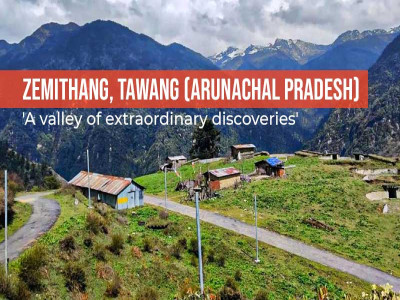
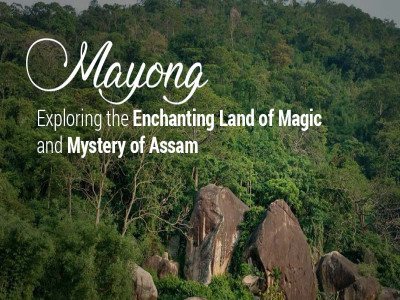

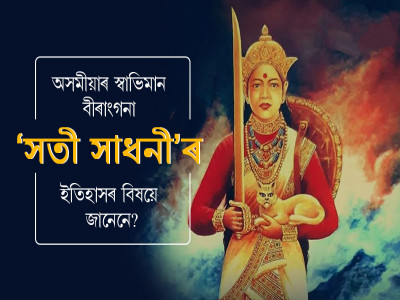
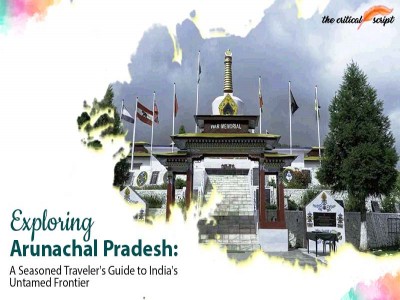









Related Comments